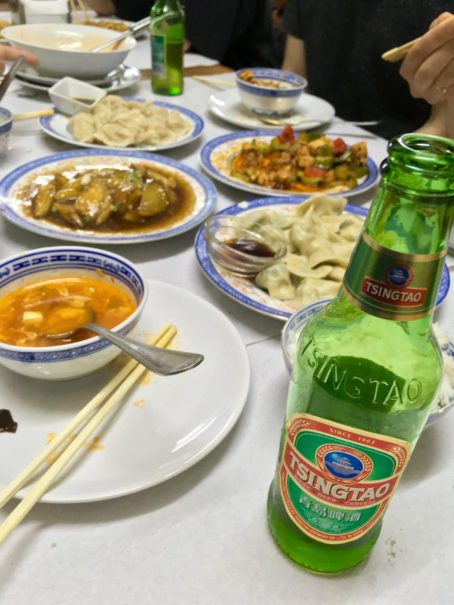
The Only Thing Better than Cheap Chinese Food and Stupidly Cold Beer

The Only Thing Better than Cheap Chinese Food and Stupidly Cold Beer
Tsingtao in Lisbon
The only thing better than a greasy plate of cheap Chinese food and a stupidly cold Tsingtao is the mission to track these items down.
In a city awash with dining options, secret Chinese restaurants have become a favorite among students and tourists craving a break from Lisbon’s cheese boards and green wine. This kind of restaurant, known as a chinês clandestino, slings wontons and fried rice for even lower prices than its less covert counterparts. Many are family businesses run out of apartment buildings, where customers eat right in the living room.
The directions I’d received from friends were vague: a certain building number on a block known for its Indian restaurants, but the name of the street forgotten. Or, around the back of a shopping mall and up a twisting alleyway. Just ask around, they said.
Determined to find a clandestine Chinese restaurant on a rainy night this spring, I followed a winding cobblestone path up a hill in the immigrant neighborhood of Martim Moniz. I imagined arriving at the base of a dark stairwell and whispering into an intercom my intention to suck down bowls of noodles.
Instead, I stumbled upon a small square with a cafe, and slyly asked the barman where the clandestino might be. “The Chinese?” he responded, tossing his head toward an unassuming doorway on the other side of the street.
There was no posted sign to confirm this tip, but the door was open. I walked inside and ascended a graffiti-covered staircase leading into vast room. Inside it was light—glaringly bright, in fact, under rows of fluorescent bulbs—and spacious. Two front-of-house staff navigated long, canteen-style tables, couriering plates of food from a hidden kitchen on another floor. I took my seat among a few dozen other diners, none over the age of 40. Hiding in plain sight, I thought, as I ordered my coveted one euro Tsingtao.
The place had all the trappings of a “high-quality” restaurant: blown-out photos of dishes framed on the walls, black-and-white panoramas of New York City with the taxi cabs printed in yellow, and Europe’s favorite napkins—those useless squares of waxy, white baking paper that repel liquid and stains.
To my left, a Portuguese guy and his Brazilian friend split a single plate of four euro noodles. After some coy smiles and winking, they offered me a joint. On my right, tourists jabbered in Spanish.
But just how clandestine was this place? I noted with some dismay that they had Wi-Fi advertised on a large piece of butcher paper on the wall. I logged in to check if the place was listed on Foursquare. It was.
Perhaps this wasn’t the most clandestine of places, but it was enough to whet my appetite for more of Lisbon’s ‘secret’ restaurants.